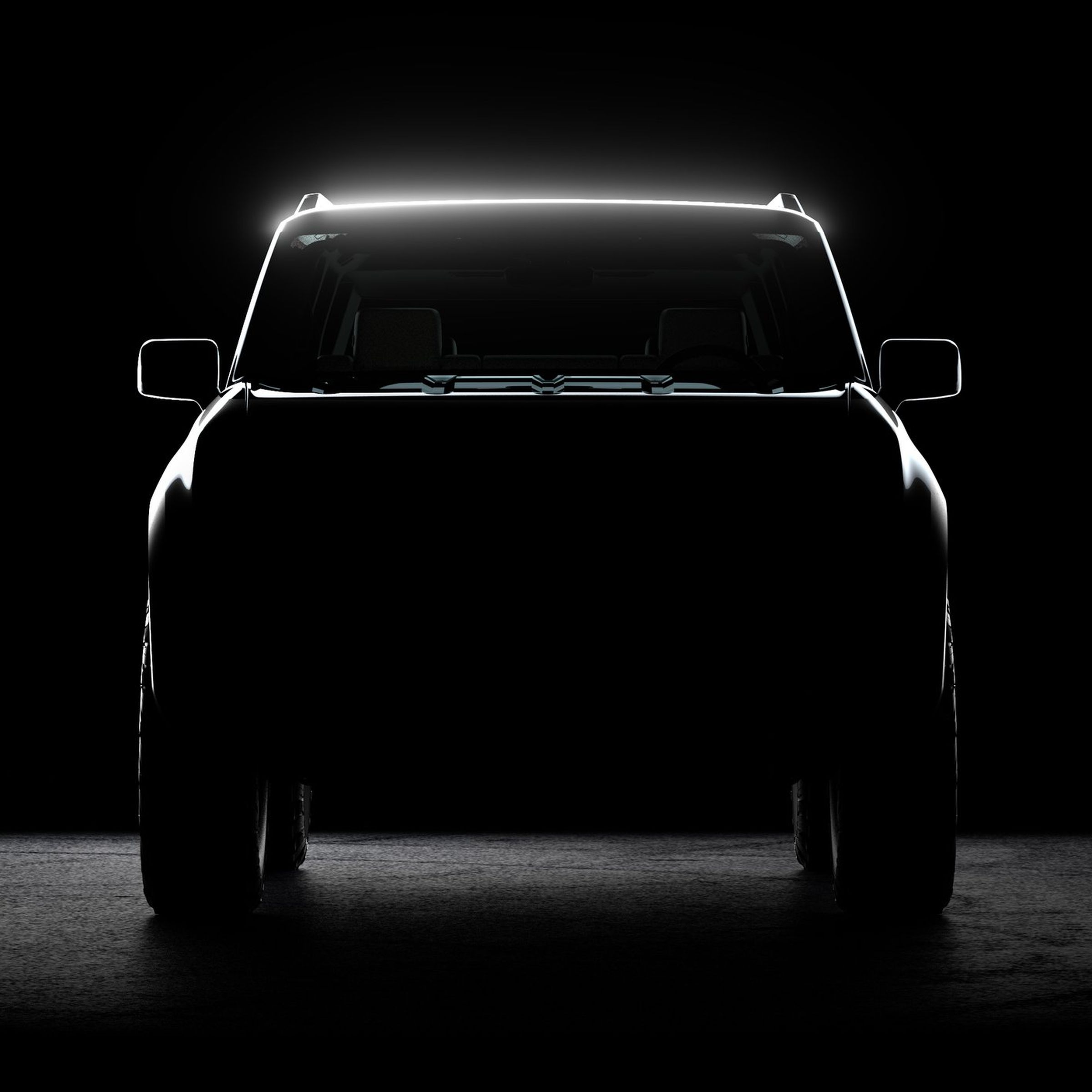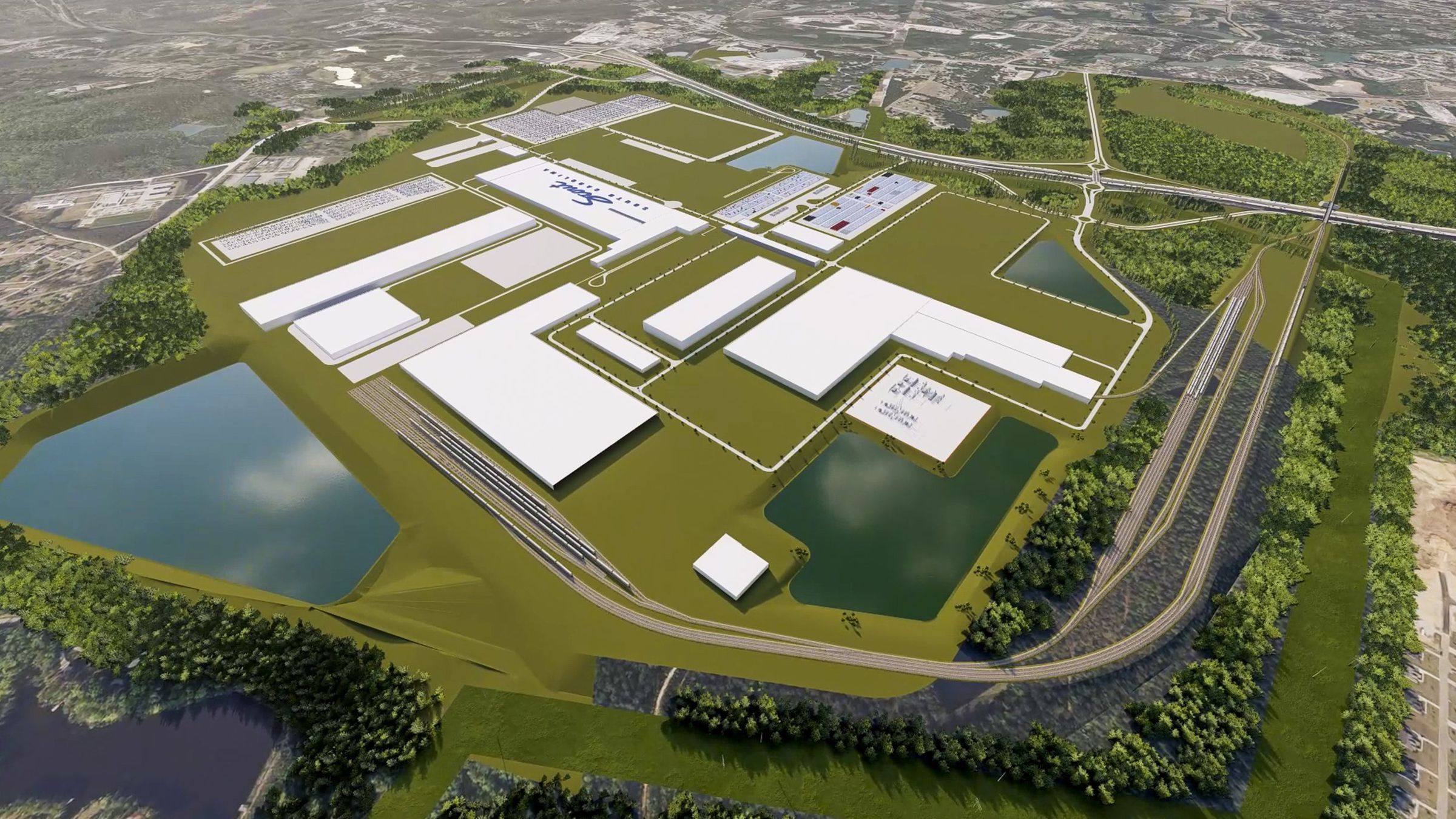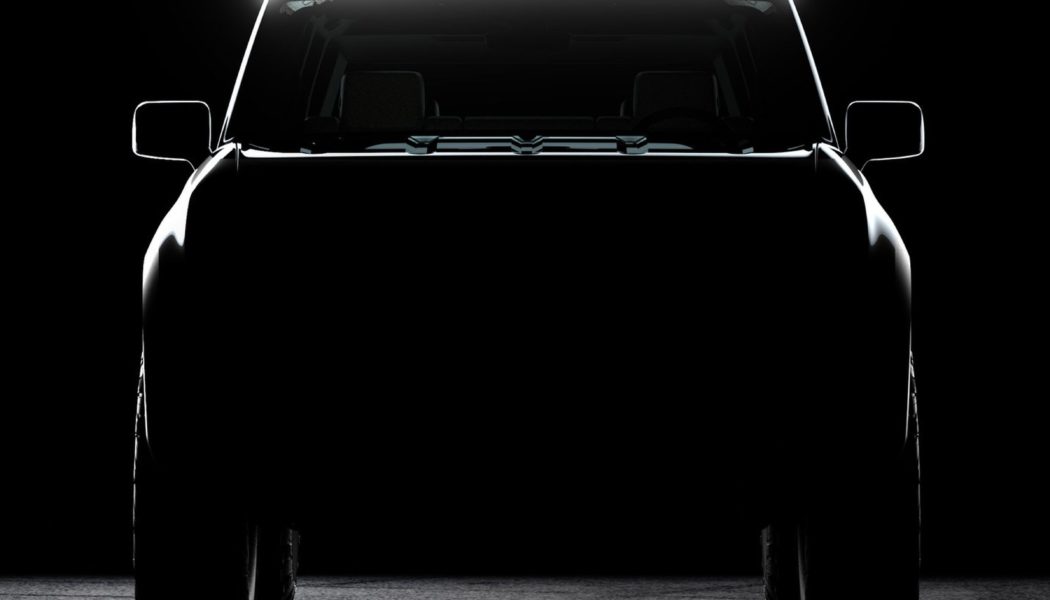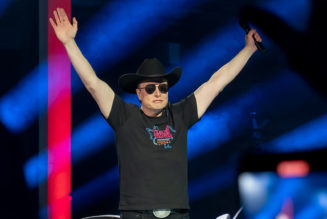The VW-owned brand broke ground on its new factory in South Carolina, where it eventually will churn out hundreds of thousands of rugged, battery-powered off-roaders. And that includes “chunky buttons.”
Share this story

Typically, when there’s a groundbreaking ceremony for a new factory, all the executives line up with their commemorative golden shovels and pose for photos throwing the first patch of dirt.
But Scout Motors CEO Scott Keogh didn’t want to play any “fake shovel games” for the groundbreaking of his company’s new factory outside Columbia, South Carolina.
Instead, the team found a brick from the old International Harvester factory in Fort Wayne, Indiana, where the original Scout SUVs were manufactured from 1961 until the brand was discontinued in 1980. That brick will serve as a launch point for the electric rebirth of Scout in the US, as well as a reminder of its storied past.
“That’s going to give us a powerful beginning here,” Keogh told me a day before the groundbreaking ceremony.


You may not remember, but the Scout name used to be synonymous with rugged, off-road sport utility vehicles. The first Scout was introduced in 1961 by International Harvester as a small, two-door SUV with a raised, boxy design. A precursor to the more sophisticated SUVs to come, it was intended to compete with Jeep, featuring rugged details and a fold-down windshield. The Scout and second-generation Scout II were produced at the Fort Wayne factory as two-door trucks with a removable hardtop.
Production stopped in 1980, and Volkswagen acquired the rights to the brand when it bought Navistar International in 2020. (Navistar was created in 1985 when International Harvester went out of business.)
VW could have let the brand name go fallow, but instead it decided to resurrect Scout as an EV-only marque. The German automaker is one of the biggest in the world, but its market share in the US is still relatively small. In a bid to recapture some relevancy, it made the risky decision to jump into one of the most competitive markets in the US: rugged trucks and SUVs. And now it has the factory — and the CEO in Keogh, who used to head VW’s North American business — to churn out its adventure-themed fleet.
“The godfather is returning,” Keogh said. “If you think about it, Scout sort of invented the segment.”


Scout’s future factory will sit on a 1,600-acre site in Blythewood, South Carolina, less than 20 miles from Columbia. And at full capacity, more than 200,000 vehicles may be produced annually at the facility.
Of course, little gets built in this country without some public assistance. The South Carolina Legislature approved a $1.3 billion tax incentive package for Scout last spring, under the assurance that the company would create thousands of jobs.
Scout has said it will invest $2 billion of its own money in the project, and expects to eventually generate “4,000 or more permanent jobs.”
Keogh said the soil work at the site has been completed, and now the company will begin to lay the foundation this summer. Vehicle production is slated to kick off in late 2026, ramping into full volume production in 2027.


But there’s a lot of work to do before then. The company is staffing up, appointing top executives in charge of design, production, and technology. Local hiring has begun as the company has opened an office in Columbia’s BullStreet District. Scout is also expected to reveal its first vehicle, an electric pickup truck, later this year, most likely at the Detroit Auto Show this summer. An SUV will follow roughly six months later.
Scout will get a little help along the way. Last year, the company struck a deal with Austria’s Magna Steyr to help develop the new lineup of EVs. VW placed an order with Magna Steyr, an off-road specialist that builds the G-Class for Mercedes-Benz in Graz, Austria, worth €450 million ($492 million) to develop the models, according to local reports.
In the interview, Keogh provided some details about what we can expect from Scout’s first truck. Well, first he explained what not to expect, which is another smooth, blob-like EV designed more for aerodynamics at the expense of hard angles and corners.
“The car will stand up right,” he said, “It’s not a jelly bean.”
The overhang, or the length of the vehicle that extends beyond the wheelbase, will be “super tight” up front, Keogh said. Scout is also keeping the “iconic” fold-down front windshield, as well as how it connects to the C-pillar. And it will retain the original logo, as well as a lot of the old graphics. But there will be limits to Scout’s dedication to nostalgia as it tries to build a new brand.
“We didn’t want to say to America, ‘It’s the ‘70s again,’” Keogh said. “It’s the 21st century and of course it’s a modern car.”
The issue there is that most modern cars are also computers, and Scout’s desire to be a vehicle for the rugged set could clash with today’s over-reliance on touchscreens and semiconductors.
Keogh said the problem with EVs is that many of them are built to be “isolation machines,” sheltering drivers from the outside world with hyper-intelligent software, advanced driver assist systems, and plenty of gadgets and gizmos. That’s not Scout’s guiding philosophy. The door handles on Scout’s future vehicles will be real door handles, for example.
“We do believe in mechanical,” he said, “and we believe in chunky buttons.”
VW, in particular, has run into trouble deploying functional software in its vehicles, leading to a lot of scrambling in the top tiers of the company. Some of its early EVs have been criticized for putting too much functionality behind the touchscreen.
It’s too early to say how Scout will approach things differently. But Keogh provided some insight into how the company will approach the thorny issue of software and technology.
Off the line, Scout’s first EVs are expected to be relatively simple in order to streamline the production process. The engineering teams will be testing wiring harnesses to ensure the whole system is stable and functional right out of the gate. Any additional complexity can be added later through over-the-air software updates, he said.
“Use software where it can make a difference,” Keogh added. “Pull it behind the curtain as much as you can.”









